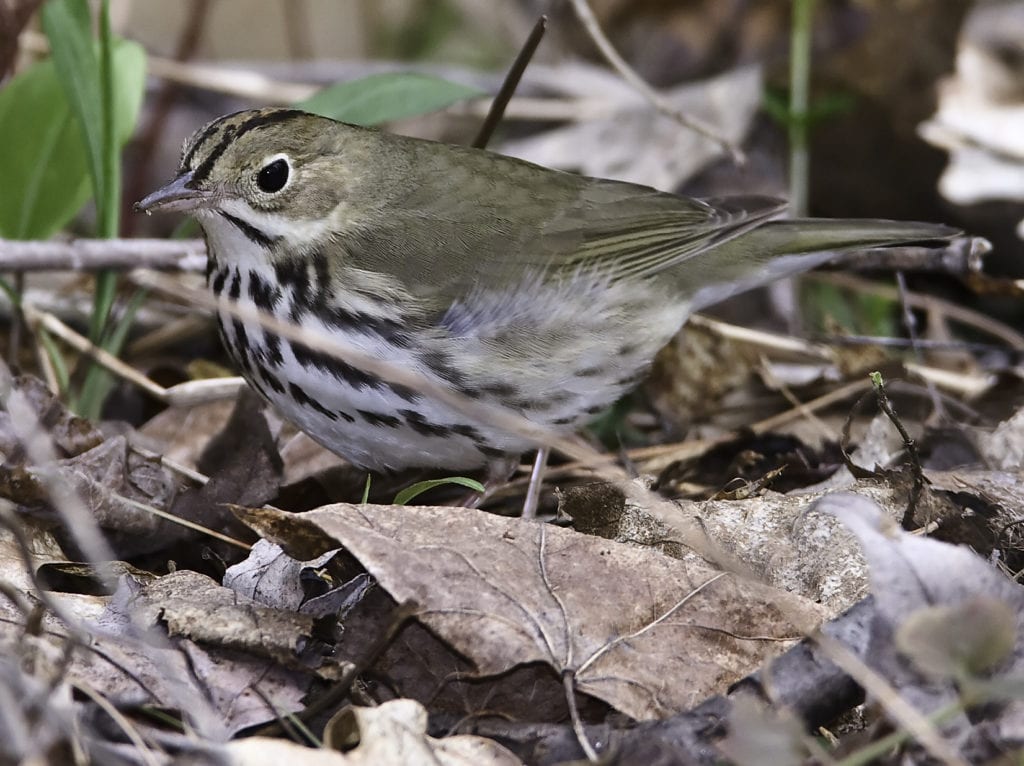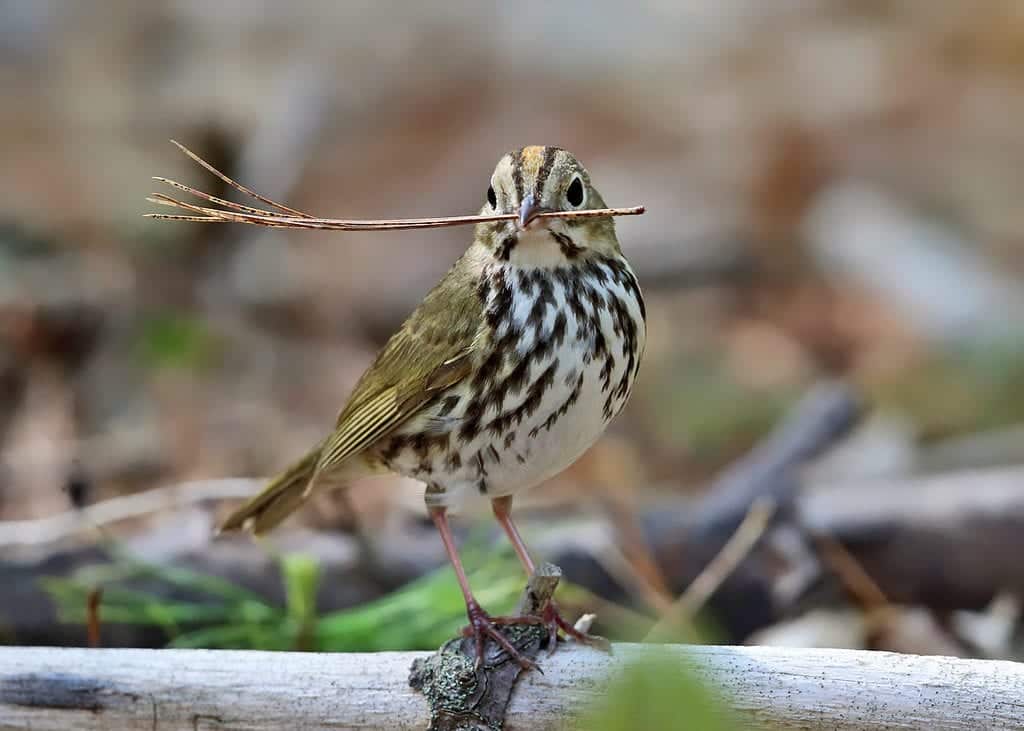
We’re continuing our series on Central Maine Power’s proposed New England Clean Energy Connect (NECEC) transmission line project focusing on the potential impacts to Maine wildlife. Maine Audubon feels strongly that NECEC and its mitigation plan offer unsatisfactory protections for Maine wildlife and is especially deficient in its consideration of habitat fragmentation. (Read Part I here.)
In considering the impacts of NECEC and habitat fragmentation on Maine wildlife we will start with species that need intact blocks of interior forest, and who may be at risk from increased predation and disturbance from habitat fragmentation. One such species is the Ovenbird.
Ovenbirds aren’t named because they’re good chefs, but rather because of their unusual nesting style. Unlike most migratory warblers who choose to nest in trees, Ovenbirds build their nests on the ground, constructing camouflaged domes out of sticks and leaves that look a bit like outdoor bread ovens.
Ovenbirds are a classic deep-woods species, heard more frequently than seen. Their loud song–a piercing, ascending chorus that sounds like “Teacher! Teacher! Teacher!”–is commonly heard during spring and early summer in dense Maine woods.
Unfortunately, ground- or low-nesting birds like Ovenbirds are susceptible to predation and disturbance brought on by fragmented habitat. Studies have shown that Ovenbird nesting density drops by 40% within 150 meters of forest edge habitat, such as a road or transmission line, through otherwise proper habitat. (Yvette K. Ortega and David E. Capen, Effects of Forest Roads on Habitat Quality for Ovenbirds in a Forested Landscape, The Auk: Ornithological Advances, Volume 116, Issue 4, 1 October 1999, Pages 937–946, https://doi.org/10.2307/4089673.)

There a variety of explanations for the harmful impacts of edge habitat on ground-nesting birds. When a habitat is fragmented there are more opportunities for predators and generalist species to penetrate. Nest predators like crows, and Blue Jays, and feral cats that otherwise don’t venture into deep forests may have easier access to Ovenbird eggs and young by traveling along an open transmission line corridor. Additionally, the changes in habitat created at a forest edge — additional sunlight promotes different plant growth, for example — may limit the ability of Ovenbirds to find proper nesting locations or prey items for their young.
A number of bird species would be impacted in this way, in addition to Ovenbirds. Black-throated Blue Warblers, Hermit Thrush, Canada Warbler, and Black-throated Green Warbler are among the more than two dozen bird species listed as Maine’s Species of Greatest Conservation Need who need unfragmented habitat to thrive. The impacts to these species from increased predation and disturbance associated with NECEC has yet to be properly considered. Maine Audubon has recommended that, should the project proceed, that fragmentation be reduced by burying sections of the line, and edge effects be reduced by using alternative vegetation management techniques such as creating a “V-shaped corridor”, and creating additional wildlife corridors by allowing vegetation to grow to create low forest canopies or to use taller poles to allow full canopy growth.
